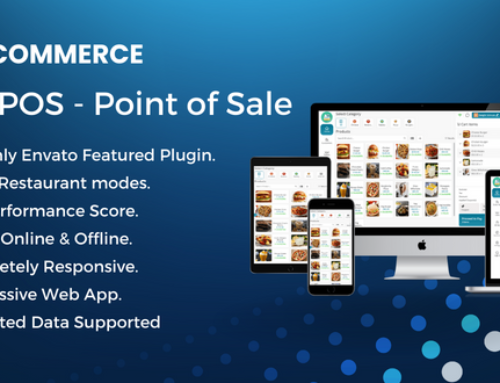Pharmacare is a piece of software that will completely transform how pharmacists manage their data. It features a user-friendly interface with a responsive and contemporary design for efficient operations. Pharmacare provides capabilities for patient profiles, billing, inventory control, and prescription monitoring for pharmacies of all sizes.
Pharmacare is compatible with a wide range of devices because it has a responsive design. This means that chemists and staff can access and change information from PCs, laptops, tablets, or smartphones. It streamlines inventory management by keeping track of stock levels, providing reports in real time, and securely storing prescription information for precise dispensing. In order to improve personalized treatment and safety, Pharmacare also makes it easier to create and maintain patient profiles.
Pharmacare also integrates with insurance companies to expedite billing and invoicing procedures while lowering administrative mistakes. Pharmacare is an all-inclusive, user-friendly pharmacy management system that equips chemists with the tools they need to increase productivity, improve patient care, and increase profitability.
Features
Module for Customer Management:
- Effectively handle client data, including personal data, past purchases, and preferences.
- Customer information may be quickly retrieved for personalized service and follow-ups.
Module for Supply & Purchase:
- Manage supplier purchases to streamline supply chain management.
- Maintain an inventory of orders, delivery, and supplier information.
Single-click setup:
- Pharmacare may be rapidly set up using a straightforward and painless installation method.
- Reduces the need for time and effort while deploying software.
Module for inventory:
- Manage pharmacy inventory effectively, keeping an eye on expiry dates and stock levels.
- Automated reordering should be set up to guarantee optimal stock availability.
Simple Invoice System:
- Utilize a user-friendly system to streamline the billing process.
- Reduce human mistakes by quickly and properly creating invoices.
Financial module:
- Keep tabs on all financial activity, including sales, costs, and earnings.
- Detailed reports can give you information about the pharmacy’s financial situation.
Module for Product Management:
- With capabilities like classification, pricing, and barcode production, items, including medications and prescriptions, are easily managed.
- Observe the specifics of the product and the supply level.
Clean and Fresh Code:
- Pharmacare’s code is clear and well-optimized, resulting in stability, dependability, and fluid performance.
- Offers a strong platform for further upgrades and improvements.
Daily, monthly, and annual reports on sales, profits, and expenses:
- Create detailed reports on sales, earnings, and costs for the day, the month, and the year.
- Make wise judgments by gaining insightful knowledge on how well your business is performing.
Management of Due Payments:
- Observe any unpaid invoices from clients or suppliers.
- Manage payment collections effectively by setting reminders.
Choose Your Currency:
- The currency option can be modified to reflect your location and chosen currency type.
- Enables quick and precise financial tracking.
Management of medication, drugs, customers, staff, clients, suppliers, and users:
- Manage several parts of your pharmacy effectively, such as the supply chain, personnel information, client information, and drug inventories.
- Roles and permissions-based user management offer restricted access to the software.
Point of Sale (POS) Management:
- Easily handle sales transactions with a POS system that is easy to use.
- For a seamless checkout experience for customers, invoicing must be quick and precise.
Medical, Customer, Purchase, and Invoice Searches by First Letter:
- Searching using the initial letter makes finding medications, client profiles, purchase histories, and invoices simple.
- Saves time and improves user convenience.
Sales Graph:
- Using interactive diagrams and charts, visualize sales trends and patterns.
- Learn more about how sales are doing and make choices based on the info.
Generate Invoices:
- Create and print invoices with a professional appearance for client transactions.
- Gives hard copies to customers or for record-keeping purposes.
Create Reports With a Date Range and More:
- Create personalized reports with precise date periods to enable in-depth examination.
- To meet different pharmacy administration demands, the programme provides extra features and functions.
Additional New Features
GUI POS System:
- Streamline the process of making sales by utilizing an easy-to-navigate graphical user interface (GUI) that enables fast transaction processing and simplified navigation.
- Improving the entire customer experience may be accomplished by tailoring the point-of-sale (POS) system to the unique requirements and branding of the pharmacy.
Invoice and Management System:
- Generate itemized invoices that provide specific information on the items, quantities, prices, and taxes that may be relevant.
- You can easily monitor and keep track of the history of your invoices, including the payment status, due dates, and specifics about your customers.
Add the Purchase:
- Make sure you fill up purchase orders with all of the pertinent information, including product names, quantities, unit costs, and facts about the suppliers.
- Maintain a record of the purchases that have been made for the purposes of precise inventory management and accounting.
Accounts Ledger:
- To keep track of all of your financial activities, including sales, purchases, costs, and payments, you need to keep a detailed ledger of accounts.
- Better financial management may be achieved by keeping an eye on things like cash flow, outstanding balances, and profitability.
Stock Report:
- Access thorough stock reports that show product amounts, stock levels, and the value of the goods in real-time.
- Determine whether products have a low turnover rate or are currently out of stock so that you may make educated decisions about future purchases and increase the efficiency of your inventory.
Sales Report:
- Produce detailed sales reports that analyze the success of sales depending on a variety of characteristics such as different time periods, product categories, or client demographics.
- Gaining insights into the goods that are selling the most, the peak sales periods and the patterns in revenue may help businesses make strategic decisions.
Return Invoice:
- Processing returns and issuing return invoices ensures that returned products are precisely tracked and that refunds and exchanges may be efficiently managed.
- Make that the returned items have the appropriate paperwork and that they are reconciled with the related sales transactions.
Payment System:
- Customers will appreciate your flexibility if you accept a variety of payment methods, such as cash, credit cards, and digital wallets, which you must manage.
- For more effective administration of accounts receivable, set up automated payment reminders and keep track of past-due payments.
Report on Taxes:
- Create tax reports based on transaction information and applicable tax rates that compute and summarize tax liabilities.
- Make it easier for people to comply with tax laws by giving correct information that may be used for submitting tax returns.
Add Supplier:
- Keep a supplier database updated with crucial facts such as preferred communication methods, payment conditions, and contact information.
- Streamline the administration of suppliers and make it easier for them to communicate and collaborate effectively.
Invoice for a Service:
- Make bills for the services that have been delivered, such as professional fees, consulting costs, or other services that are not linked to the product itself.
- Personalize each invoice for a service by including all of the pertinent facts and price structures that are unique to that service.
New Medicine:
- Add new medications to the database along with their complete information, which should include their generic names, brand names, doses, and facts about their packaging.
- When organizing drugs to make them easier to find and retrieve, assigning categories and subcategories is essential.
Import Medicine (CSV):
- Import data pertaining to medications from CSV files into the system in order to simplify the process of adding several drugs at once.
- Importing information from other sources, including distributors and suppliers, can help you ensure that the data you enter is accurate.
The broad array of services provided by Pharmacare gives pharmacies the ability to control their operations effectively, simplify billing and invoicing, and maintain accurate records. Pharmacists and employees are able to optimize their workflow and provide improved service to customers because of the system’s user-friendly design and intuitive functions.








